I tested the LG C5, Samsung S90F and Sony Bravia 8 so you don't have to – which OLED TV is best?
A classic premium OLED TV head-to-head! Does LG, Sony or Samsung win?
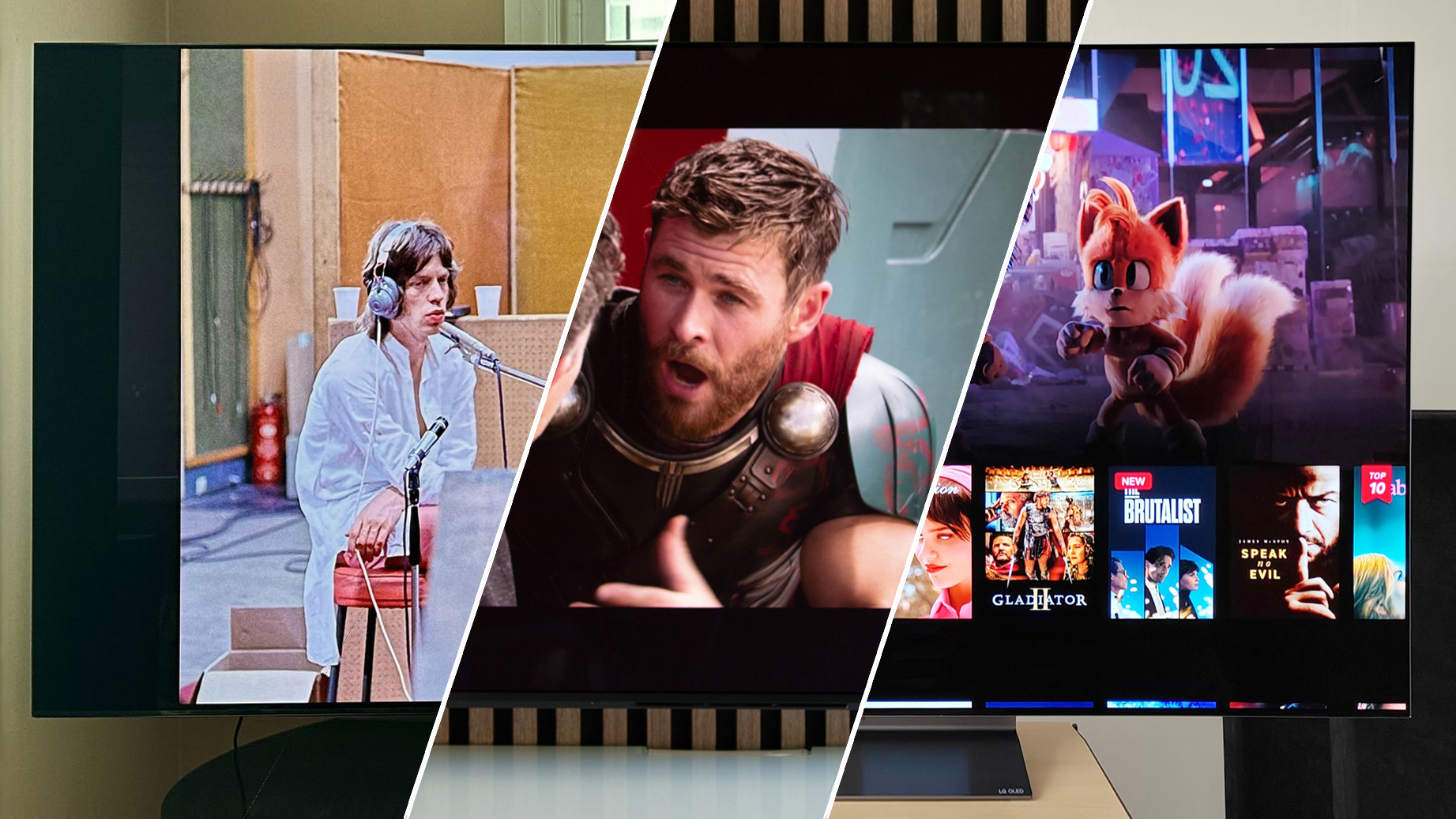
It’s a great time to buy one of the best new TVs. Whether you’re replacing a dusty old box or speccing a new home cinema room, the choice of high-performance screens has never been better.
For many, it's the best OLED TVs that continue to be the display technology to covet, thanks to its fabulous dynamics and cinematic nature – but what model would be best for you?
In this in-depth comparison, I've pitted three highly-regarded performers from LG, Sony and Samsung against each other, to see how they stack up.
All our combatants are 4K resolution and, as tested, are 65-inch in scale, each with their defining traits. But should you buy an LG OLED C5, Sony Bravia 8 or Samsung S90F?
Price
While LG and Samsung have parity on the high street, Sony is the value winner here. But there’s a good reason for that.
The OLED C5 is LG’s mainstream OLED hero. The model is available in 42-, 55-, 65-, and 77- inch screen sizes, with our 65-inch model priced at £/$2,699. There are 42-inch and 83-inch models available in the USA.
The Samsung S90F OLED TV is available in a similar range of sizes: 42-, 48-, 55-, 65-, 77-, and 83-inches. Our featured screen is the 65-incher, also known as the GE65S90FAT (GQ65S90FAT in Europe, or GN65S90FAT in the USA). It’s listed at £/$2,699.
Get all the latest news, reviews, deals and buying guides on gorgeous tech, home and active products from the T3 experts
The Sony Bravia 8 OLED comes in the fewest screen size options, shipping in 55-, 65-, and 77-inch sizes. The 65-inch model, reviewed here, is priced at £1,999 (or even less in the USA, at $1,799).
At this scale, therefore, it's the Sony Bravia 8 that's the more affordable model – by dint of the fact that it’s also the oldest. Introduced in 2024, it continues in the Sony range throughout 2025 – although there is a newer, brighter, Bravia 8 'II' model.
Smart TV Platform
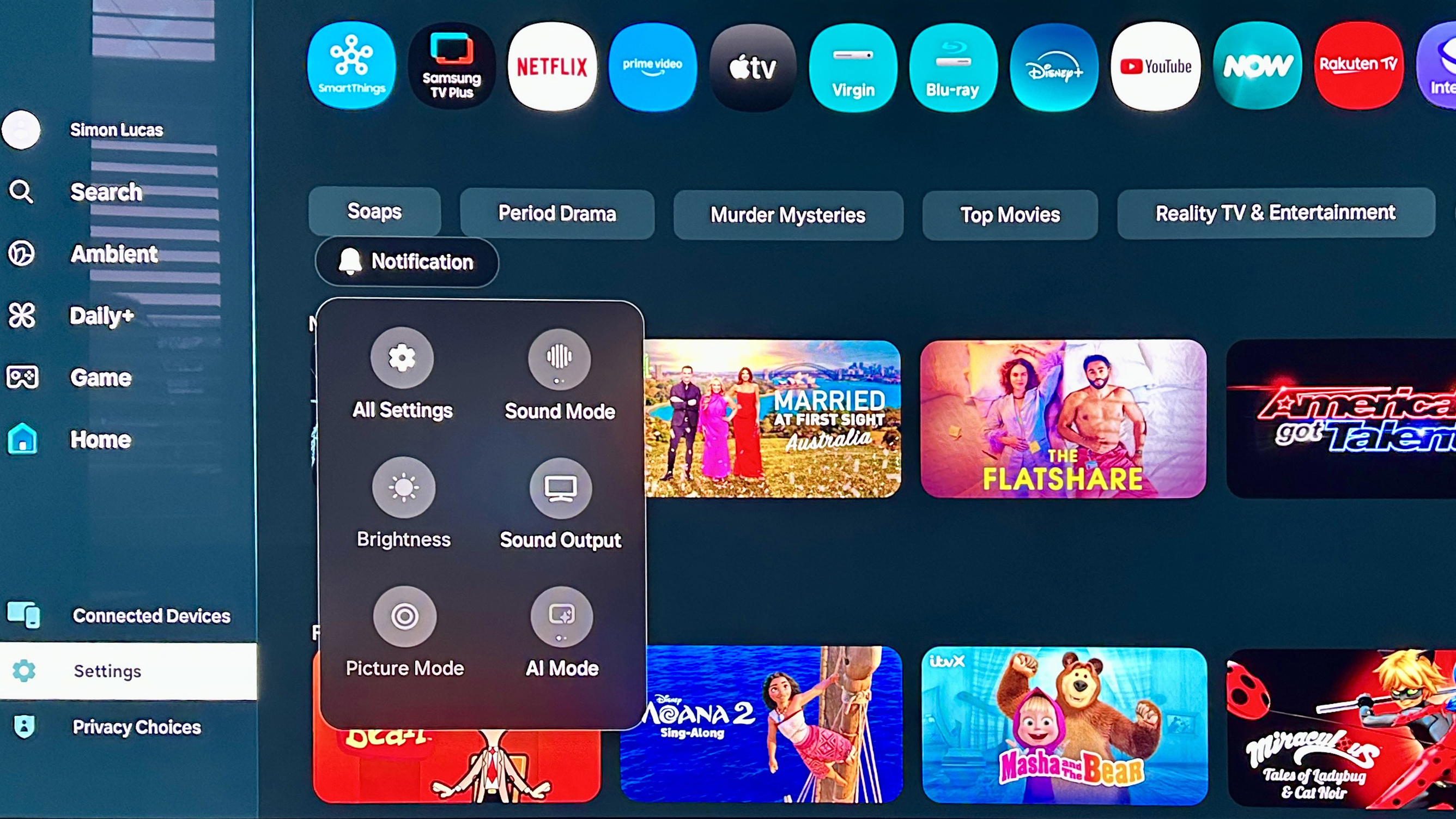
Amid all the usual talk of panel technologies, high dynamic range (HDR) performance, and specification minutiae, it’s easy to overlook the smart platform of your next TV. Yet, this is crucial to your real-world experience when living with the set.
LG OLED C5
The LG OLED C5 runs the brand's webOS platform, updated for 2025. This new iteration ushers in fresh AI functionality, including a Chatbot to help with basic commands, and AI personalisation through voice ID. The idea is that after some training, the TV will recognise the user profile of the person barking orders, and temper its recommendations accordingly.
Do you need such niceties? Almost certainly not, and using them at the moment feels less than intuitive. More significant is the provision of umpteen streaming apps, catch-up TV players and LG channels, LG’s own linear TV over the Internet channel selection.
Sony Bravia 8
The Sony Bravia 8 is built around the Google TV smart OS. In many ways, it’s the most straightforward of our three competing offerings, and wins plaudits through its ease of use. It doesn’t try too hard – and that’s to its credit.
Google TV is unashamedly content-centric, and offers a full cupboard of popular streaming services and catch-up players. It also benefits from Googlecast and Google Assistant interaction. Google Photos integration allows you to personalise the screen saver.
Samsung S90F
In many ways, Samsung’s Tizen offers the best of webOS and Google TV. It comes with a full raft of streaming services and catch-up players, has solid content curation and recommendations, but is also tightly integrated with Smarthings home automation gizmos.
In addition to all the usual streamers, you also get Samsung TV+, the brand’s own free-to-watch Internet TV channel bouquet. There’s voice interaction if you want it, via Alexa (or Samsung’s own Bixby), as well as some nice novelties, including a Notes widget you can pin to the screen, to pass messages to friends and family.
Ultimately, there’s not a great deal between the three models on trial. All can entertain with streaming TV services – but for elegance and overall usability, Samsung just edges this category.
Design & Connectivity
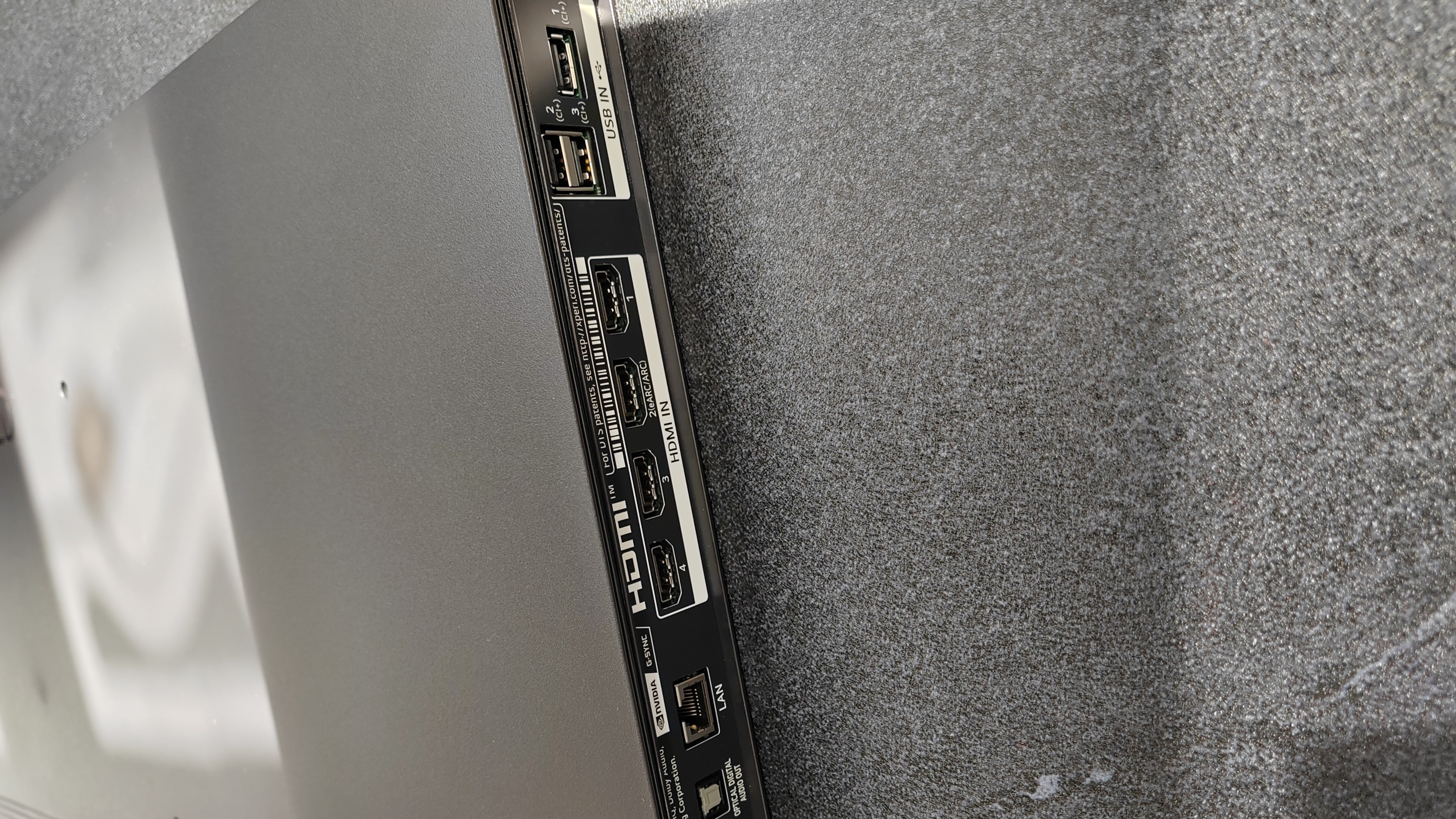
LG OLED C5
Of all the TVs on trial here, the LG C5 is probably the sleekest. The oh-so-thin panel is wrapped in an unobtrusive metal frame, and sits on a central pedestal stand, with a faux brushed slate finish. It looks great.
Connectivity is good too, with four HDMI 2.1 ports, three USBs, optical digital audio out, plus Ethernet.
All four HDMIs support 4K/120 Hz gameplay, so there’s plenty of system expansion opportunities.
The TV comes with a standard Magic Remote, with thumbwheel control and a poimter system for an on-screen cursor. I’m personally not a fan of this idiosyncratic zapper, but I know plenty of people who are.
Sony Bravia 8
The Sony Bravia 8 is also a good looker. Thin with a steely frame, it looks suitably minimalist. Feet can be placed centrally, or to the edge, depending on your AV furniture.
It also ships with two remote controls. One is a standard pointer, the other a premium USB-rechargeable version.
Unfortunately, connectivity is hampered by the fact that only two of the four HDMI inputs are the 2.1 type – meaning limited support for 120Hz. One of those two is also the eARC point, so if you're using one of the best soundbars in addition then you'll be surrendering that port.
Samsung S90F
Of the three sets, the Samsung S90F is the least visually attractive. It has fairly routine build quality, and stands on a pair of cheap-looking slot-in plastic feet.
Like the Sony, it comes with two remote controls, a standard IR pointer, and a more compact Bluetooth controller.
Like its LG rival, the S90F offers generous connectivity, offering HDMI 2.1 on all four inputs. There are also two USB ports, an optical digital audio output, Ethernet LAN, and dual tuners for terrestrial and satellite reception.
All three screens have Wi-Fi and Bluetooth for wireless connectivity.
Aesthetically I think the LG warrants the most envious glances, but that Magic Remote could be divisive. Sony comes close when it comes to design elegance, but limited connectivity may be a deal-breaker here.
Picture & Sound
LG OLED C5
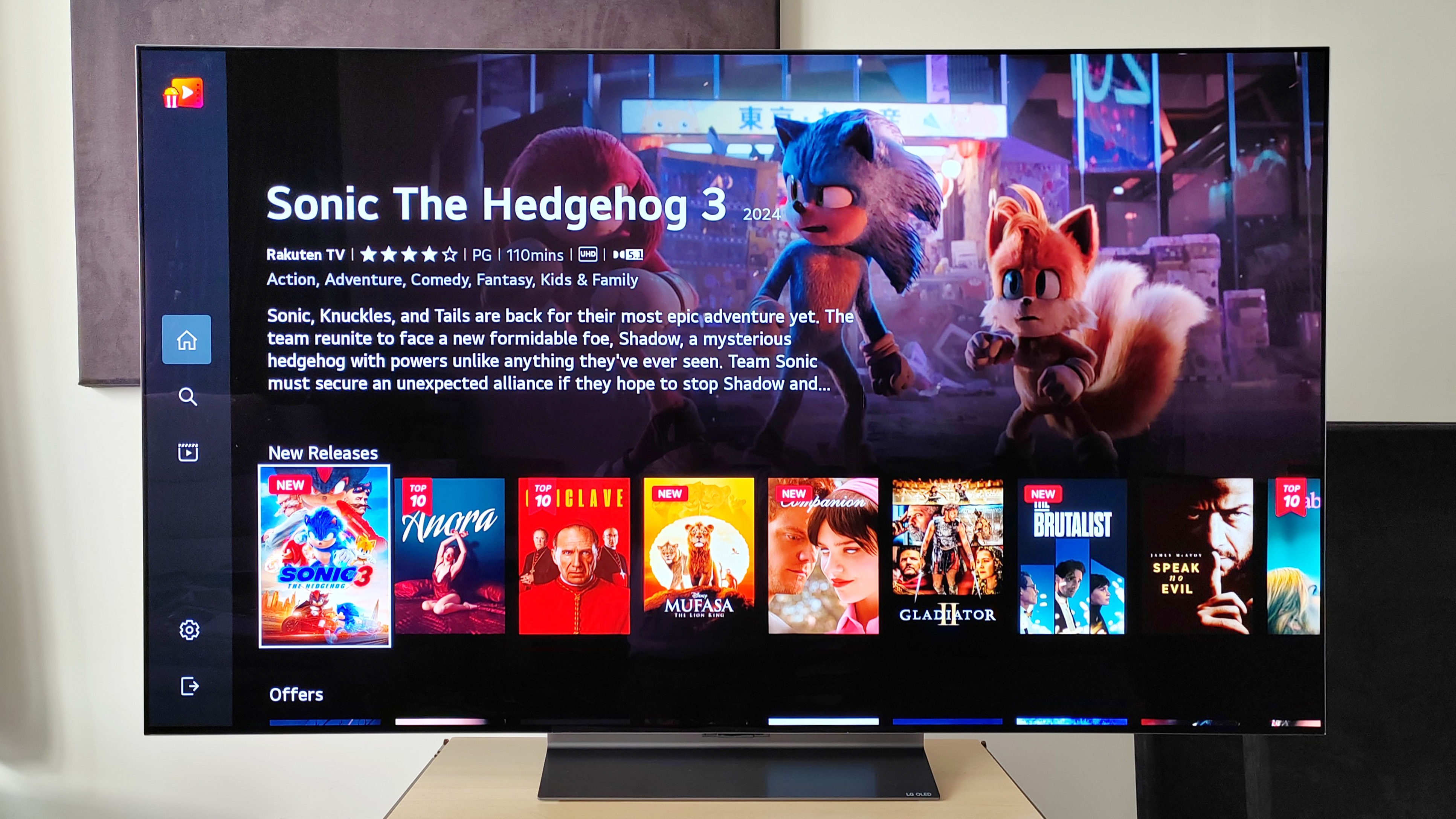
The LG C5 is unquestionably a top tier picture performer. It doesn’t have the leading edge panel tech employed by the upper-tier LG OLED G5, but then it’s nowhere as expensive, and frankly you might be hard-pressed to spot the difference anyway.
HDR performance is excellent, courtesy of its Brightness Boosting algorithms. Not only does it offer nuanced near-black and convincing shadow detail, it also delivers scintillating bright highlights. I measured peak HDR brightness just over 1,200 nits (with a 10% patch), which is formidable.
There’s Dolby Vision, HDR10, and HLG support, but not HDR10+. It also comes with an good variety of picture presets, including Filmmaker Mode boosted by an intelligent ambient light sensor that adjusts imagery to your viewing environment. There’s also an AI-powered Personalized Picture Mode, which does a fine job of exploiting the potential of the panel, without you needing to lift a finger.
The LG C5’s 40W stereo audio is a good deal less impressive, presumably because the brand believes you’re going to connect one of the best LG soundbars to the screen anyway. To that end, a compatible LG soundbar unlocks Wow Orchestra mode, which syncs the TV speakers with those of the bar.
Sony Bravia 8
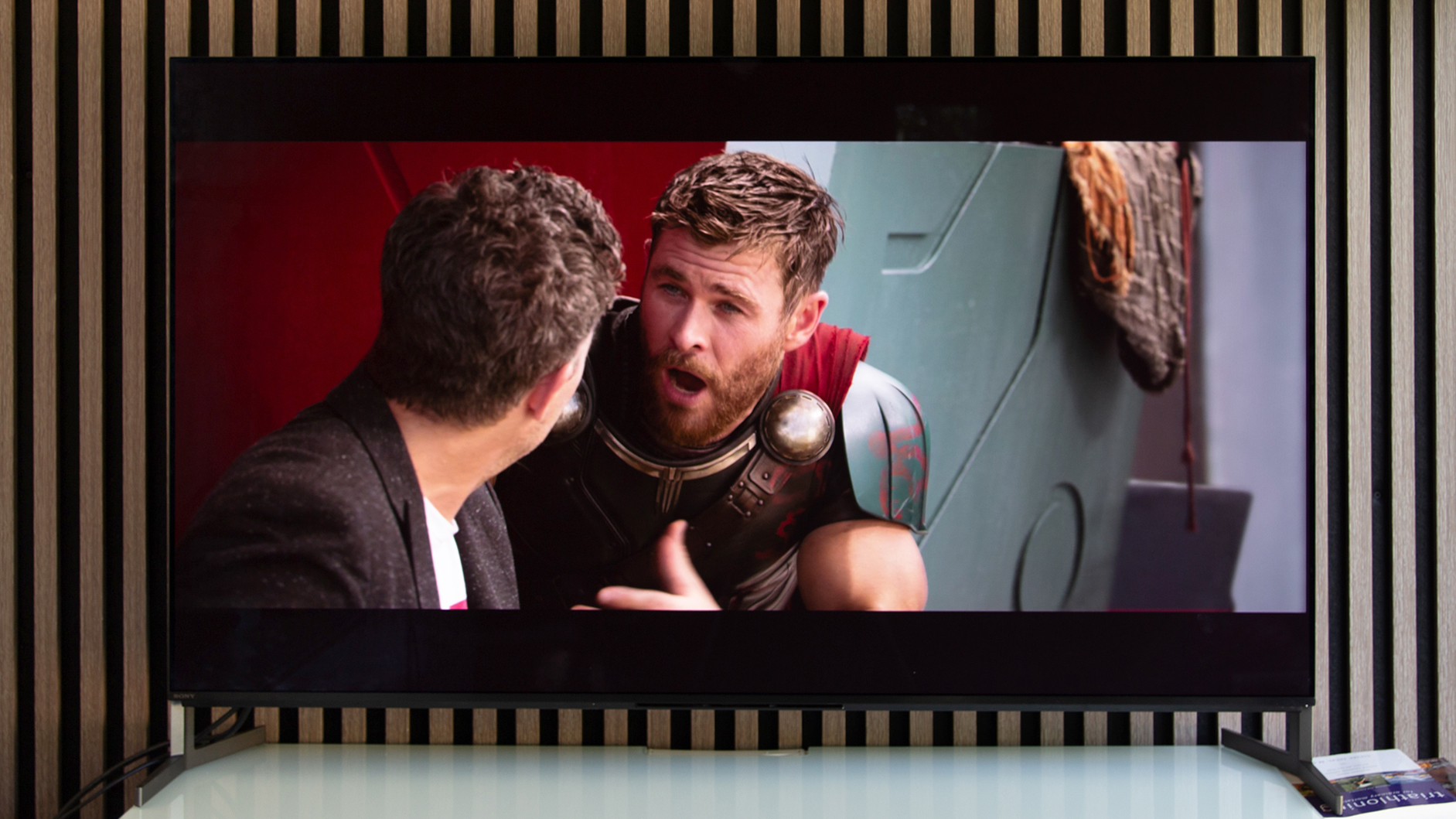
The Bravia 8 aquits itself better when it comes to sound, thanks to Sony's Acoustic Surface Audio+ system. Using actuators that turn the OLED panel into a speaker, the Sony delivers 50W of spacious audio with clean dialogue and cinematic-style delivery. It’s a little bass-light, but then that’s to be expected.
Pictures also impress, although the Sony OLED lacks the head-turning appeal of the newer C5. The Bravia XR processor always does a great job with detail, however peak HDR brightness is more subdued. I measured 999 nits (using a 10% patch). HDR support covers Dolby Vision, HDR10 and HLG, but HDR10+ is absent.
Samsung S90F
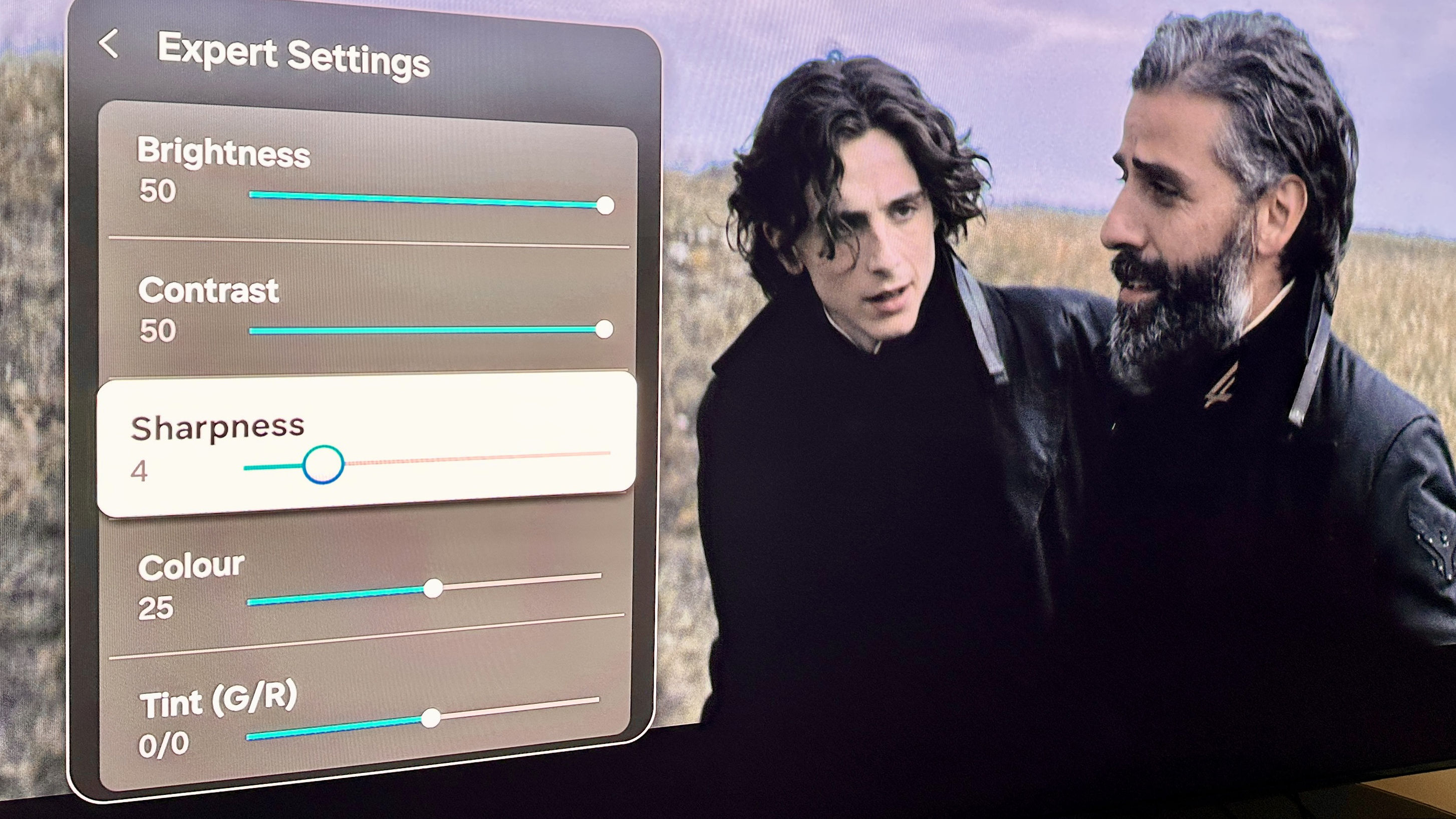
Of the three TVs, it’s the Samsung which ultimately wowed me the most. Long story short: the 65-inch S90F looks gobsmackingly fine.
Its colour range and vibrancy is extraordinary and peak HDR brightness is best in class. With tiny specular highlights, like fireworks, stars or glinting lens flare, it can deliver as much as 1990 nits. I measured 1000 nits (using a 10% patch) – but the overall balance is just sublime. Every aspect of the image is in harmony.
The S90F uses Samsung’s NQ4 AI Gen 3 processor, which is particularly praiseworthy when it comes to upscaling HD content. Of the picture presets, Standard and Movie modes are the most reliable.
The elephant in the room, of course, is the absence of Dolby Vision from its HDR suite. The good news is that this may not be the issue it once was, as Netflix rolls out support for HDR10+. The S90F’s inherent brightness also makes tone mapping somewhat academic for streamed content.
The S90F’s sound system is pretty decent too, courtesy of 40W amplification. For a larger wall of sound, you can partner the screen with one of the best Samsung soundbars, to enjoy Q-Symphony, wherein all speakers work together.
LG C5 v Sony Bravia 8 v Samsung S90F: Verdict
To be fair, all three screens featured here offer a superior TV experience to your average. They stomp all over the cheap stuff, and look good doing so.
But there are obvious divides when the three are compared. The Sony Bravia 8 comes in a respectable third, largely down to the lower volume of HDMI 2.1 ports. But, in its defence, it has been left out on the track longer than its two newer rivals – and therefore it's undoubtedly great value.
The battle between the LG OLED C5 and Samsung’s S90F is far tighter. When it comes to smart platforms, choosing between webOS and Tizen is largely a matter of taste. They both have everything you need, and plenty more that you simply don’t. Picture quality is closer still.
It might well be argued that the LG OLED C5 has the edge (it being a classic, cinematic-like W-OLED), at least when brightness and vibrancy are considered piecemeal.
But it’s the Samsung (it being a QD-OLED type) that really manages to bind every aspect of its picture together. Whatever I watched on it, simply looked brilliant. There’s a visual alchemy here that both LG and Sony lack.
And while the Samsung has marginally better sound out of the box, it doesn’t match the C5 when it comes to style – meaning the LG might be the best-looking set both when switched on or off.
Follow T3.com on Google News to keep our latest news, insights, and features at the top of your feeds!
For over 25 years, Steve has been casting his keen eyes and ears over the best that the world of TV and audio has to offer. He was the creator of Home Cinema Choice magazine, and contributes to huge range of technology, home and music titles along with T3, including TechRadar, Louder, Ideal Home, the i newspaper, and more.
You must confirm your public display name before commenting
Please logout and then login again, you will then be prompted to enter your display name.


